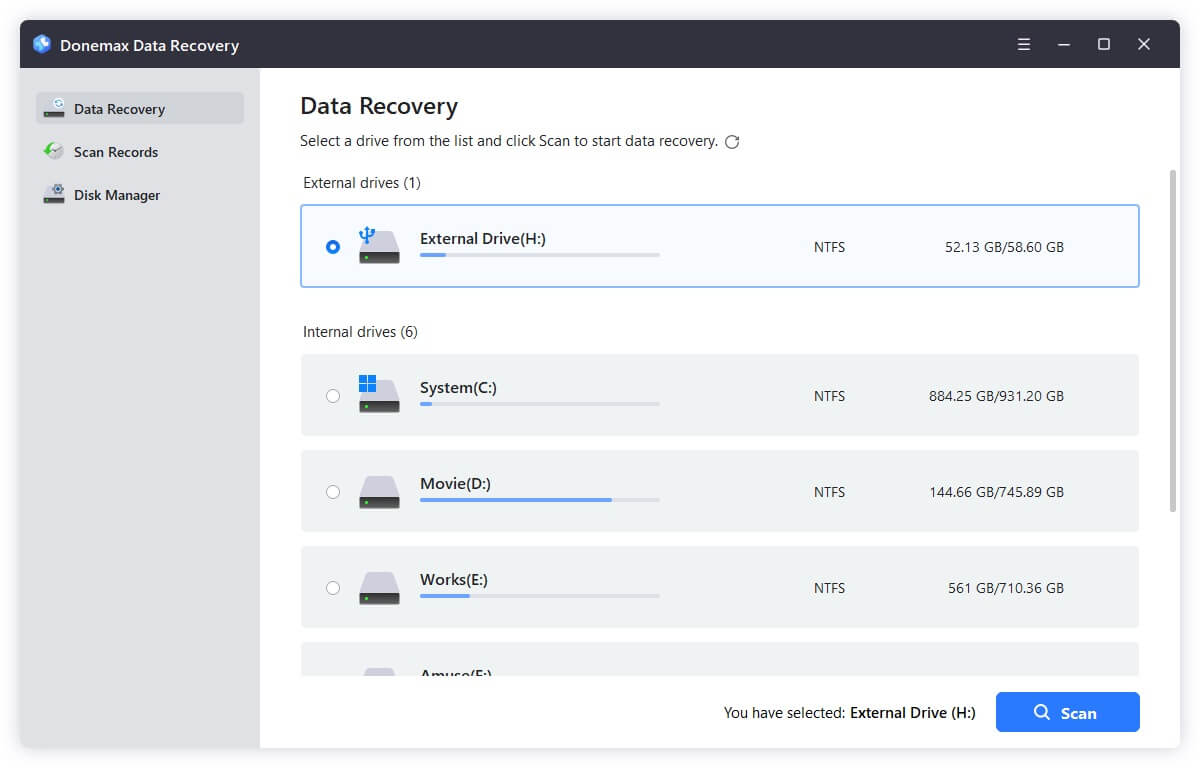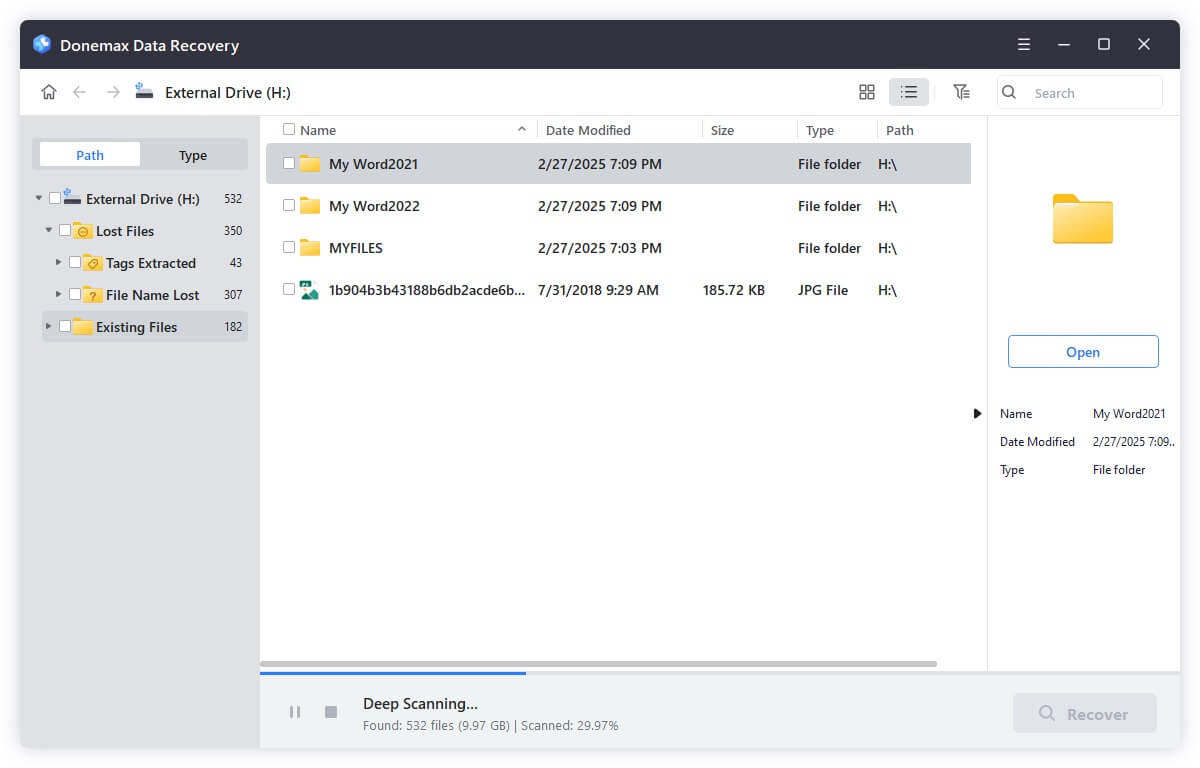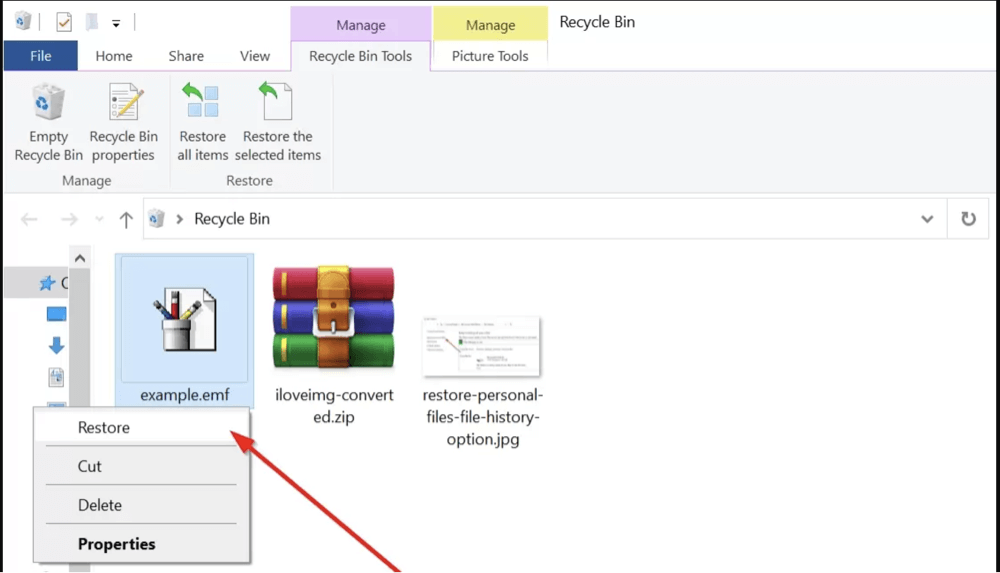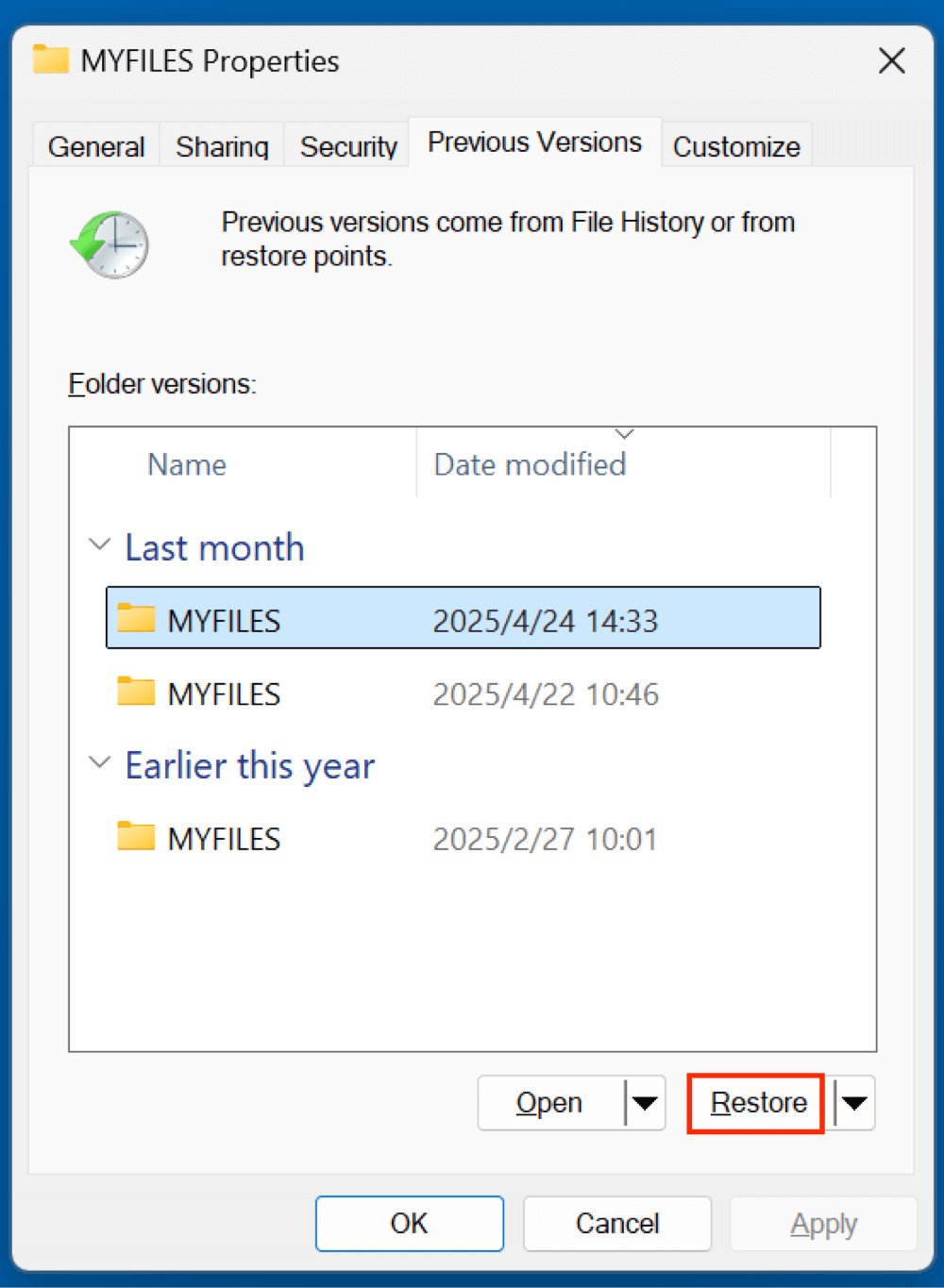Before we start: Data recovery software is a good option for recovering deleted EMF files from Windows computer or external storage device. It can deeply scan the drive and find all recoverable files including the deleted/lost EMF files. Just select the EMF files, click on Recover button to save them.
PAGE CONTENT:
Enhanced Metafile (EMF) files are widely used in Windows environments to store vector graphics. These files are especially valuable in graphic design, printing, and document management tasks. Accidentally deleting or losing an EMF file can be frustrating, particularly if it's part of a complex project or was hard to recreate.
Whether your EMF file was lost due to accidental deletion, system crash, formatting, or malware, this guide offers detailed, practical steps to help you recover your deleted EMF files efficiently.

What Is an EMF File?
An EMF (Enhanced Metafile) is a graphics file format developed by Microsoft. It serves as an improved version of the Windows Metafile Format (WMF). EMF files are primarily used to store vector-based graphics such as drawings, illustrations, and diagrams. They are widely supported across Microsoft applications including Word, Excel, and PowerPoint, and are also used in various graphic and CAD software.
Key features of EMF files include:
- High-quality vector graphics
- Support for scalable images
- Device-independent rendering
These files are often embedded in documents or used for printing tasks where maintaining resolution and scalability is critical.
Why a EMF File Get Deleted or Lost?
Understanding how EMF files get deleted helps you better assess the situation and choose the most effective recovery strategy.
▪️ Accidental Deletion
It's not uncommon for users to mistakenly delete important files while clearing space or organizing folders.
▪️ Disk Formatting
If you formatted a disk or USB drive containing EMF files without backing it up, the data may still be recoverable unless overwritten.
▪️ File System Corruption
File system errors or sudden system shutdowns can corrupt directories, making EMF files disappear.
▪️ Virus or Malware Attacks
Certain malware strains target files for deletion or encryption, including EMF files.
▪️ Incomplete Transfer or Save
Removing a USB drive during file transfer or unexpected power failures can result in missing or corrupted EMF files.
Is It Possible to Recover Deleted EMF Files?
Yes, deleted EMF files can often be recovered, especially if the data hasn't been overwritten. When you delete a file, the system typically just removes the file pointer and marks the space as available. The actual content remains on the disk until new data overwrites it.
This makes it possible to restore EMF files using:
- Recycle Bin
- Backups
- Data recovery software
Important: Stop using the storage device immediately after deletion to prevent overwriting the EMF file's data blocks.
Best 4 Methods to Recover Deleted and Lost EMF Files
Let's go through the recovery methods, from simple to advanced, to restore your EMF files.
Method 1. Restore Deleted EMF File from the Recycle Bin
The first step is to check if the file is still in the Recycle Bin.
Steps:
- Double-click the Recycle Bin icon on your desktop.
- Type *.emf in the search bar to find EMF files.
- Right-click the file you want to restore and select Restore.
![recover your deleted EMF files]()
The file will return to its original location. This method only works if the file was deleted via the File Explorer and the bin hasn't been emptied.
Method 2. Recover EMF Files from File History or Backup
If you have File History or other backup tools enabled, you can restore EMF files from a previous version.
Using Windows File History:
- Go to the folder where the EMF file was stored.
- Right-click and choose Restore previous versions.
![recover your deleted EMF files]()
- Browse through the versions and click Restore on the appropriate one.
![recover your deleted EMF files]()
Third-party Backup Tools:
If you used external backup software (e.g., Donemax Disk Clone, Acronis, Macrium Reflect), use the app to browse and recover .emf files.
Method 3. Use Data Recovery Software to Recover Lost EMF Files
If Recycle Bin and backup methods fail, data recovery software offers the most reliable solution.
Donemax Data Recovery is a powerful data recovery program. It supports to recover all file formats including .emf.
Step 1. Download and install Donemax Data Recovery on a different drive than where the EMF file was lost.
Step 2. Open Donemax Data Recovery, choose the location where the EMF file was deleted from.

Step 3. Click on Scan button to deeply scan the selected drive and find all recoverable files including the EMF files.

Step 4. Browse the results and use the search bar to find .emf files. Select EMF the files to recover and click Recover, saving them to a different drive.

Best Practices When Using Recovery Software
- Act Quickly: The longer you use the device after deletion, the greater the risk of overwriting.
- Scan External Drives: EMF files are often stored on USBs or external HDDs - make sure to connect them during the scan.
- Deep Scan Mode: Always perform a deep scan if a quick scan doesn't locate the file.
- Preview Before Recovery: This helps verify the file before using your recovery quota or storage space.
Limitations of Data Recovery Software
- Recovery isn't guaranteed - especially if the file was deleted a long time ago or the drive has been extensively used.
- Files restored may be incomplete or corrupted if overwritten or partially damaged.
- SSDs with TRIM enabled may automatically wipe deleted sectors, rendering recovery impossible in some cases.
Method 4. Recover from Cloud Storage or Email Attachments
If the EMF file was shared or uploaded to cloud storage, you may recover it from there.
Google Drive / OneDrive:
- Go to Trash or Bin
- Search for .emf files
- Right-click > Restore
Email:
Search your email inbox and sent folders for attachments with .emf extensions. Download and save a local copy.
Tips to Improve EMF File Recovery Success
Recovering deleted files isn't guaranteed, but following these best practices increases your chances:
▪️ Stop Using the Drive Immediately
Any continued usage may overwrite the deleted EMF file.
▪️ Save Recovered Files to a Different Location
Saving the files back to the same location might corrupt other recoverable data.
▪️ Use Professional Tools
Free tools work well in simple cases, but professional-grade software offers deeper scans and better recovery accuracy.
▪️ Don't Defragment the Drive
Defragmentation may permanently overwrite deleted files, making recovery impossible.
Recover EMF Files from Formatted Drives
If your EMF files were deleted due to drive formatting (e.g., USB, SD card, or external HDD), recovery tools like EaseUS and Stellar can scan formatted drives.
Steps:
- Launch your recovery tool and select the formatted drive.
- Run a deep scan.
- Filter results using the .emf extension.
- Preview and restore the files.
Keep in mind, successful recovery depends on whether the sectors were overwritten.
How to Handle Corrupted EMF Files?
Sometimes, EMF files are not deleted but corrupted due to software errors or bad sectors.
Steps to Repair EMF Files:
- Use image repair tools that support vector formats.
- Convert the file to another format (like SVG) using a vector graphics editor like Inkscape.
- Recreate the EMF from backup or source material, if repair fails.
How to Prevent Future EMF File Loss?
After recovering your EMF files, take steps to protect them from future loss.
- Regular Backups: Use cloud storage (OneDrive, Google Drive) or local backup tools to save copies of your EMF files regularly.
- Enable Windows File History: Configure File History to automatically back up key folders.
- Use Antivirus Software: Protect against malware that can delete or encrypt EMF files.
- Be Cautious When Deleting Files: Double-check before emptying the Recycle Bin or formatting drives.
- Label and Organize: Maintain a clear file naming and folder structure to avoid accidental deletion.
Conclusion
Losing EMF files can be frustrating, especially when they are part of complex design or documentation tasks. However, as long as you act quickly and use the right tools, recovery is very much possible. From simple methods like checking the Recycle Bin to advanced solutions involving professional data recovery software, you have multiple avenues to retrieve your valuable graphics.
The key takeaway? Don't panic, and don't overwrite the disk. With a bit of patience and the right recovery method, your deleted EMF files can often be brought back to life.
FAQs About Recovering Deleted EMF Files
1. Can I recover EMF files from a formatted USB drive?
Yes. Use professional recovery tools that can scan formatted drives. Avoid saving new data to the USB before recovery.
2. What if the EMF file is corrupted, not deleted?
You can try repairing it with graphic editing software or convert it to another format. Some recovery tools also support file repair.
3. Are EMF files recoverable from SSDs?
Yes, but with limitations. SSDs using TRIM may automatically erase deleted data blocks, making recovery difficult. Attempt recovery as soon as possible.
4. Can I preview EMF files before recovering them?
Yes, many recovery tools like Donemax Data Recovery and Stellar support previewing EMF files before final recovery.
5. Is it safe to use free recovery tools?
Free data recovery tools are safe if downloaded from reputable sources. However, they may have limitations in terms of scan depth and recovery success rate.
If your work heavily involves EMF files, always have a multi-layered backup strategy in place. Prevention is easier and more reliable than recovery.


Donemax Data Recovery
One of the best data recovery programs to recover deleted, formatted or lost data from PC, Mac, HDD, SSD, USB drive, SD card, camera, RAID, Sever or other storage devices.
Related Articles
- Apr 25, 2025[4 Methods] Recover Lost WAV Audio File: A Complete Guide
- Jan 14, 2025Is It Possible to Recover Lost Data from a Wiped or Erased Hard Drive?
- Apr 29, 2025How to Recover Lost Data from ADATA USB Drive? [3 Methods]
- Nov 03, 2025How to Recover Deleted QuickTime Files on Windows and Mac?
- Jun 21, 2025What is MLV File? How to Recover Deleted MLV File?
- May 29, 2025Recover Deleted AEP File: Complete Guide to Restore Your Adobe After Effects Projects

Maria
Maria is one of the senior writers & editors of Donemax who lives and works in Sydney, Australia. She loves PC, Mac and Internet Technology. She has 6 years of writing articles about data recovery on PC/Mac, disk cloning solution, data eraser and computer OS optimization, etc. She is also interested in testing various software and digital products.

Gerhard Chou
In order to effectively solve the problems for our customers, every article and troubleshooting solution published on our website has been strictly tested and practiced. Our editors love researching and using computers and testing software, and are willing to help computer users with their problems



